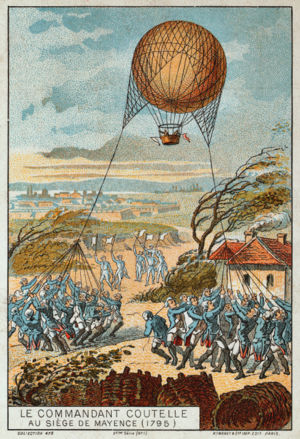Battle_of_Mainz
Battle of Mainz
1795 battle of the French Revolutionary War
The Battle of Mainz (29 October 1795) saw a Habsburg Austrian army led by Field Marshall François Sebastien Charles Joseph de Croix, Count of Clerfayt launch a surprise assault against four divisions belonging to the French Army of Rhin-et-Moselle directed by General of Division François Ignace Schaal. The right-most French division was completely routed and all the French troops were compelled to retreat with the loss of their siege artillery and many casualties. Clerfayt followed up his Rhine campaign of 1795 victory by driving most of General of Division Jean-Charles Pichegru's Army of Rhin-et-Moselle south. The War of the First Coalition action was fought near the city of Mainz in the modern-day state of Rhineland-Palatinate in Germany.
This article includes a list of general references, but it lacks sufficient corresponding inline citations. (December 2015) |
French troops had ineffectively besieged the western side of Mainz Fortress since December 1794. However, in early September 1795 the General of Division Jean-Baptiste Jourdan's Army of Sambre-et-Meuse crossed the lower Rhine River and advanced south to the Main River. For the first time Mainz was besieged on the east side of the river, but this state of affairs did not last long. After the Battle of Höchst, Clerfayt forced Jourdan's army to retire to the west bank of the Rhine. With Jourdan temporarily out of the picture, Clerfayt fell on Schaal's somewhat isolated corps and drove it away to the south. During this time the commander of the Army of Rhin-et-Moselle, Pichegru was in treasonous contact with France's enemies, perhaps accounting for Austria's success. The next clash was the Battle of Pfeddersheim on 10 November.
The siege was the second time balloon reconnaissance had been used, after the Battle of Fleurus (1794).
